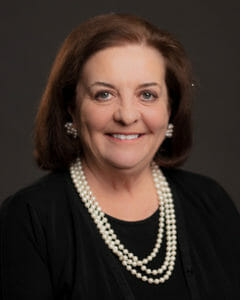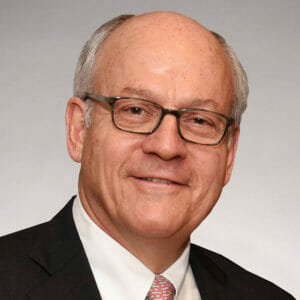
“What’s next?”
That’s the question countless patients have faced as they have been discharged from hospitals in the midst of this once-in-a-century crisis.
They have each faced what we’ve termed a “post-acute care transition.”
Post-acute care — which makes up about 8% of Medicare spending at nearly $58.5 billion — is crucial to patients’ health, especially the 6 in 10 American adults managing chronic conditions. Yet too often, navigating the care journey after leaving the hospital can be a complex and daunting task for patients, families and healthcare providers alike.

Our COVID-19 experience has made it strikingly clear: providers across the continuum of care must work together to create a more seamless environment for care transitions. And there is no better tool we can offer than the knowledge to make informed decisions based on a patient’s individual goals and needs.
All too often, patients transitioning into post-acute care face delays during discharge or leave with questions unanswered. These scenarios are no surprise, given the long menu of options for care after the hospital that must be considered and the lack of understanding of those options amongst all parties involved. Due to confusion about these options, some individuals are placed on a path that isn’t best for their needs or remain in acute care beds longer than necessary – an all-too-familiar occurrence during this pandemic.
A seamless post-acute care transition is one in which every provider on a patient’s care team works together with the patient to create a customized plan for the next steps after hospital discharge. By equipping patients and their caregivers with comprehensive — but easy to understand — information about their post-acute care options and taking the time to answer all questions about the process, there is a reduced chance of confusion or sub-optimal treatment down the line. This can help to both improve outcomes and reduce costs from readmissions or unnecessary care.
Close collaboration between acute care hospitals and their post-acute care counterparts is essential in making this happen. Providers should not only recommend a facility or particular service types to patients based on their geographic convenience but also analyze how the care models, coverage options, proximity to family and loved ones and quality initiatives serve patients’ individual needs.

Massachusetts leaders from across the continuum of care have been collaborating to create a system that does just that. And we believe it’s a model that our counterparts across the country can draw from.
In 2019, the Massachusetts Health and Hospital Association (MHA) established the Continuum of Care Council (CCC), a coalition of over 20 members spanning the healthcare spectrum, including acute care hospitals, senior care organizations, rehabilitation facilities, end-of-life care services and other stakeholders across the care continuum. The CCC meets regularly to address the roadblocks that stand in the way of seamless care between these settings. Its driving goal is to optimize cross-continuum collaboration, creating a better ecosystem for both patients and providers as they make choices about their journey.
It’s hard, often complex, work that requires input and compromise from a diverse set of perspectives. But it’s necessary work that has produced tangible results in our commonwealth.
Just this year, the CCC completed a comprehensive and collaborative process to create an “After the Hospital” Post-Acute Care Guide for patients, families, providers and clinicians. This guide is the first of its kind among healthcare systems across the country and seeks to educate and empower those tasked with making decisions about care after the hospital.
Through MHA, Massachusetts healthcare organizations are providing the guide as a resource through their patient portals, intranets and the numerous other channels through which they reach patients and caregivers. We are also urging them to actively implement the tool in their regular interactions with patients, clinicians, discharge case managers and patient/family advisory councils.
These resources have been compiled with one goal in mind: to make the question of “what’s next?” a lot less daunting.
A more seamless experience not only benefits patients and their families – it also helps providers who continue to face unprecedented strain as a result of COVID-19. A more efficient care transition system frees up hospital beds for patients who require acute medical attention while providing much-improved understanding and reliability for facilities receiving patients who are recovering from their hospital stays.
At this pivotal moment for the healthcare community, we have an opportunity to transform our system and ensure that all of its moving parts are operating in unison. It is crucial that leaders from throughout the care continuum come together at the table to confront the challenges that complicate the transition process and drive toward solutions that are sustainable and work for every patient and facility.
We owe it to our patients to ensure the best care possible at every step of their care journey.
The authors are the leaders of the Massachusetts Health & Hospital Association’s Continuum of Care Council.
Maureen Banks, RN, DNP, MBA, NEA-BC, FACHE, is the Chief Operating Officer & Chief Nursing Officer of the Spaulding Rehabilitation Network, part of Mass General Brigham.
Robin Hynds, MSN, RN, CPHM, is the Senior Vice President & Chief Operating Officer of Lawrence General Hospital.
Louis J. Woolf is the President & Chief Executive Officer of Hebrew SeniorLife.
The opinions expressed in McKnight’s Long-Term Care News guest submissions are the author’s and are not necessarily those of McKnight’s Long-Term Care News or its editors.







